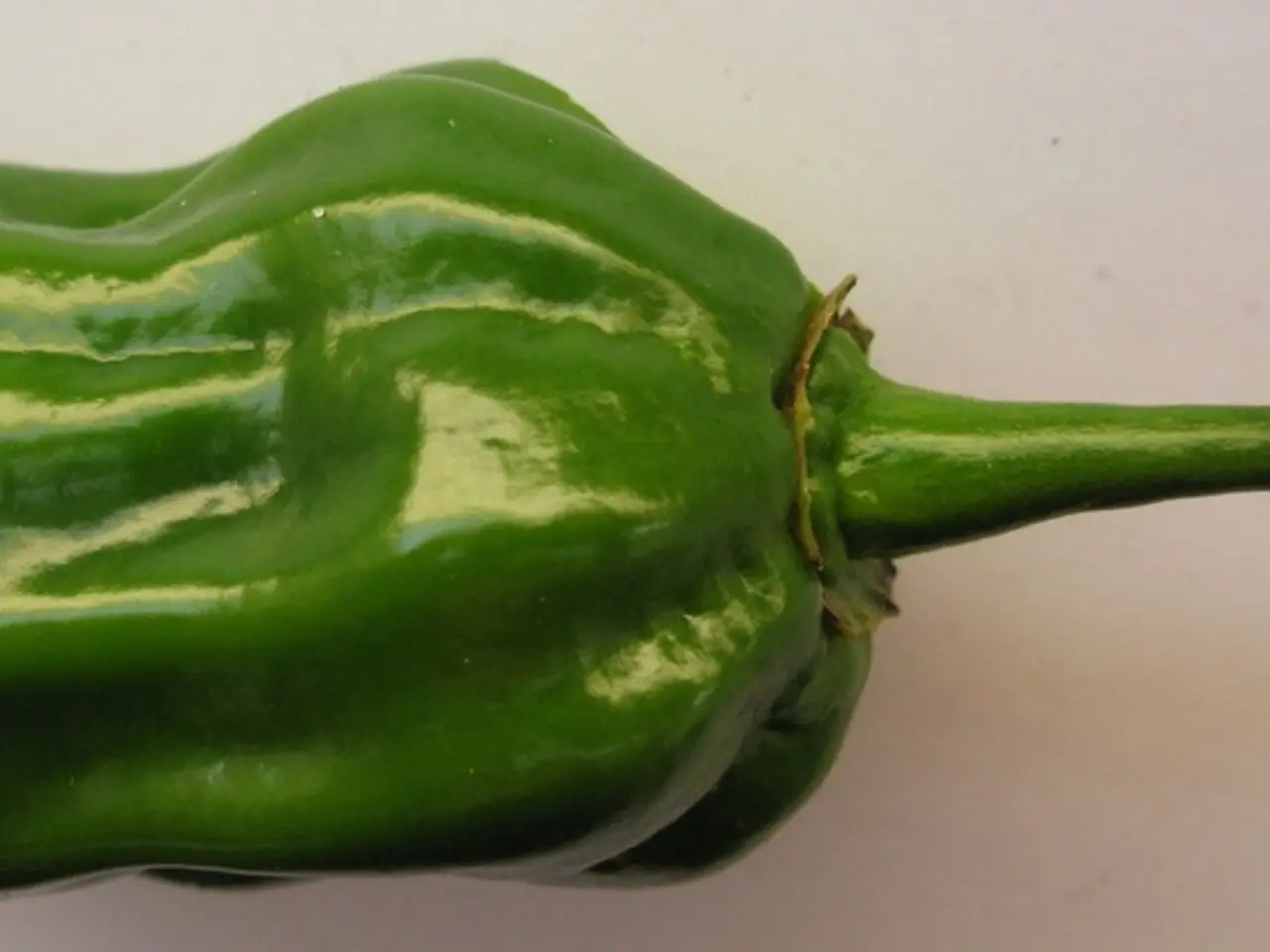Strategies for Producing a Quality Crop of Peppers, as Suggested by an Expert
Growing a Bountiful Pepper Harvest: A Comprehensive Guide
Growing a successful pepper crop requires careful attention to detail, from seed starting to harvest. Here's a step-by-step guide to help you cultivate a thriving pepper garden.
Seed Starting
To kickstart your pepper journey, sow the seeds about ¼ inch deep in warm, moist seed-starting mix, which should be kept at an ideal temperature of 80-90°F for optimal germination. This process should commence approximately 8-10 weeks before the last frost.
Hardening Off
Once the seedlings have sprouted, it's crucial to acclimate them to outdoor conditions gradually, a process known as hardening off. This helps reduce transplant shock when you move them outdoors. Acclimate your seedlings over a period of about a week by exposing them to outdoor conditions for short periods each day, gradually increasing the duration.
Soil Preparation
For the best growth, pepper plants thrive in loose, well-draining soil with a pH of 5.8-6.5. To maintain soil warmth and moisture, consider using black mulch or plastic.
Plant Spacing
When the time comes to transplant your seedlings outdoors, space them 18-36 inches apart, depending on the variety. This allows for ample room for the plants to grow and develop.
Watering
Consistent moisture is key to a healthy pepper crop. Keep the soil consistently moist but not soggy, and water at the base of the plant to prevent diseases. It's best to water early in the morning.
Preventing Early Flowering
To encourage the plant to direct its energy towards foliage and root development, pinch off any flower buds before transplanting. This helps the plant establish a strong foundation before focusing on fruit production.
Fertilizing
Use a balanced, low-nitrogen fertilizer or organic compost to support growth without encouraging excessive leafy growth at the expense of fruit production.
Sunlight
Pepper plants need full sun, with at least 6 hours of sunlight daily, for optimal growth and fruit development.
By following these guidelines, you'll be well on your way to developing strong seedlings and a vigorous pepper crop, increasing your chances of a bountiful harvest.
Tips for a Successful Harvest
- If you're aiming for an early harvest, plant your pepper seedlings early, but expect fewer fruits per plant.
- Don't remove unnecessary leaves as this can help ensure a bountiful and high-quality pepper harvest.
- Peppers do not tolerate cold well, so be mindful of the soil temperature when planting.
- If a pepper has gained enough mass and is flowering in the garden, the flower can be left but should not hinder the development of the branch.
- Sprouts from store-bought seeds can appear at different times, so be patient and monitor your seedlings closely.
- Removing the main flower that appears at the first fork is a controversial issue; seek advice based on your specific situation.
- It's better to plant pepper seedlings when the soil has warmed up or use heating to ensure optimal growth.
With these tips in mind, you're now equipped to nurture a thriving pepper garden and enjoy a bountiful harvest. Happy gardening!
Read also:
- Life Expectancy with Interstitial Cystitis: Exploration of Research, Treatment Methods, and Additional Information
- What extra 'insignias' are you requiring?
- A singular platypus is the last known relative to have branched off from all other mammals some 150 million years back.
- Projected Steel Rebar Market Value Reaches USD 330.0 Billion by 2034




